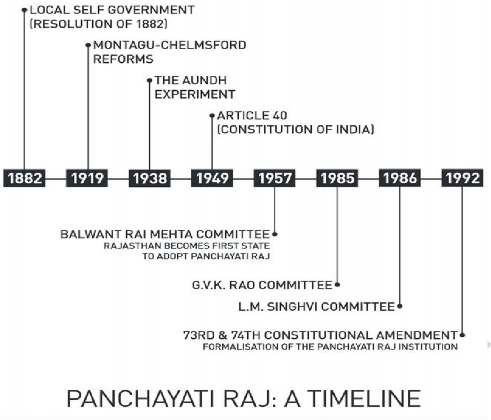1.5. Post Independence period
♤ Soon after the Independence, the political dispensation realized the importance of grassroots democracy. The Constitution of India, under Article 40, provisioned that “the state shall take steps to organise village panchayats and endow them with such powers and authority as may be necessary for them to function as units of self-government.''
♤ In 1957, the Government of India appointed the Balwant Rai Mehta Committee to examine the workings of the National Extension Service and Community Development Program. The Committee recommended a scheme for “democratic decentralisation”, as well as a three-tier system with directly elected members at the village level. The recommendations of the Committee were accepted by the National Development Council. Rajasthan became the first state to adopt the system.
♤ Later the G.V.K. Rao Committee 1985 recommended making the “district” as the basic unit of planning while the L. M. Singhvi committee recommended providing more financial resources and constitutional status to the panchayats to strengthen the.
♤ While many states implemented Panchayati Raj in some form, there was a lack of uniformity among the models adopted by different states.
♤ The formalisation of the system of Panchayati Raj in India culminated in the 73rd and 74th Constitutional Amendment Acts of 1992.

